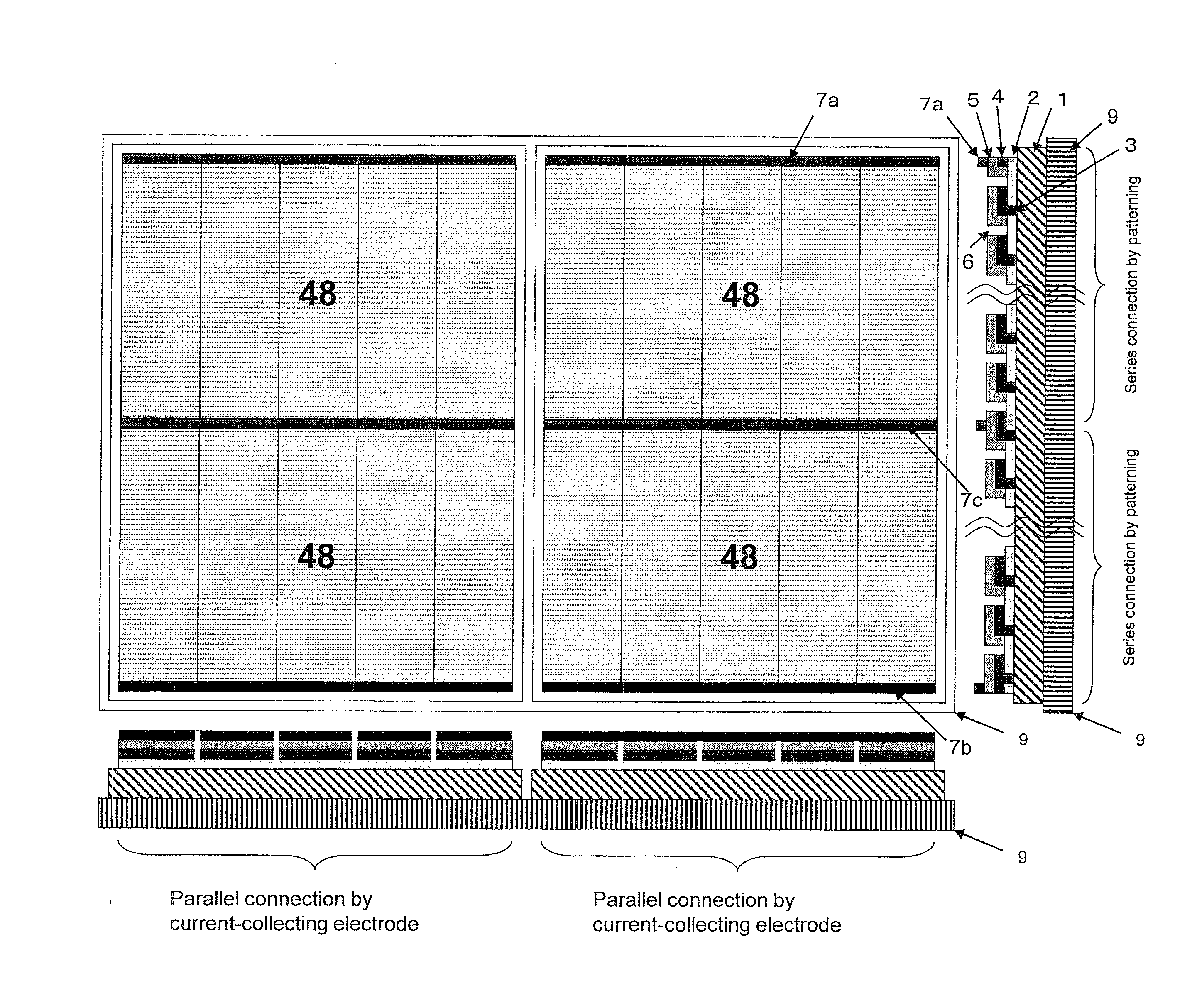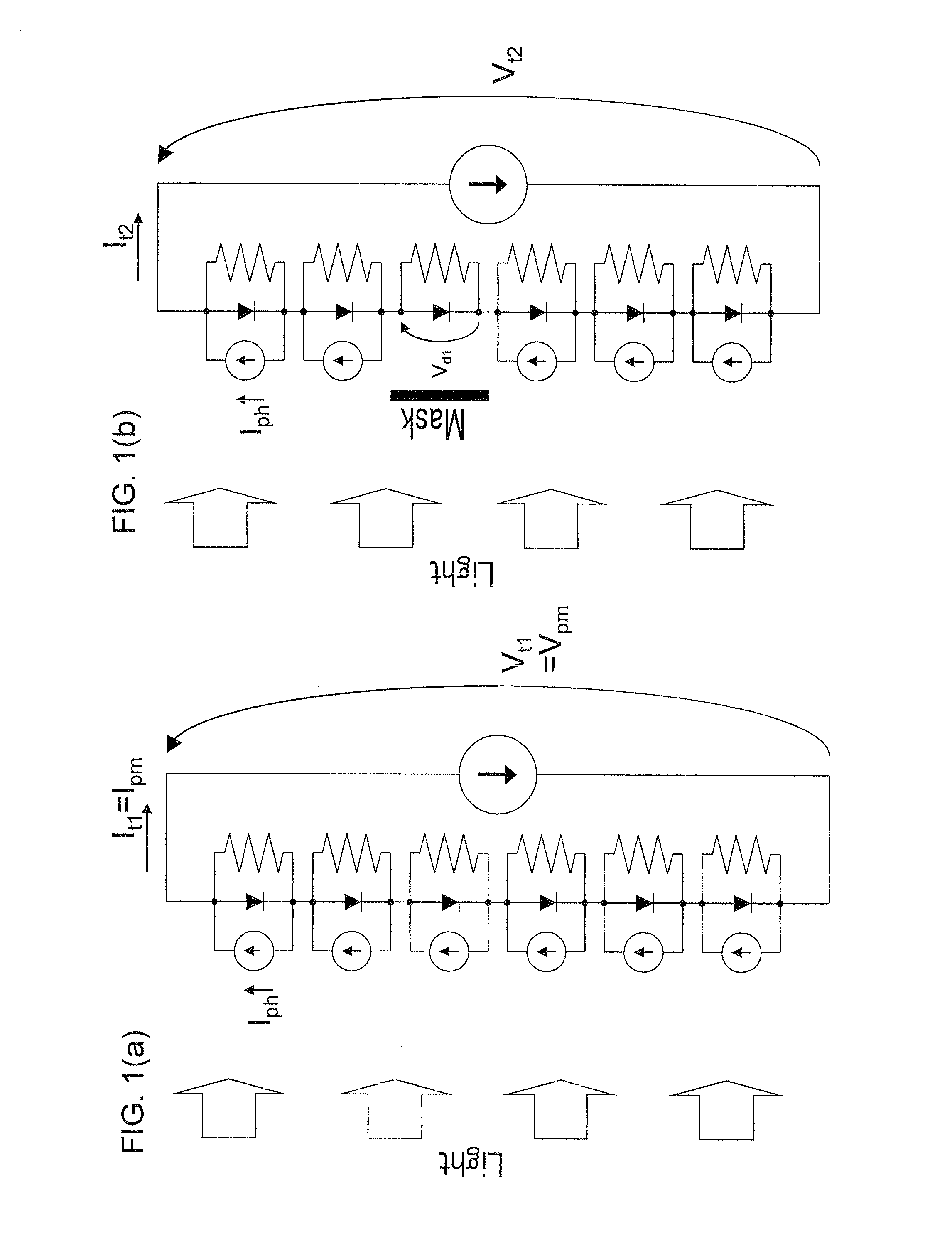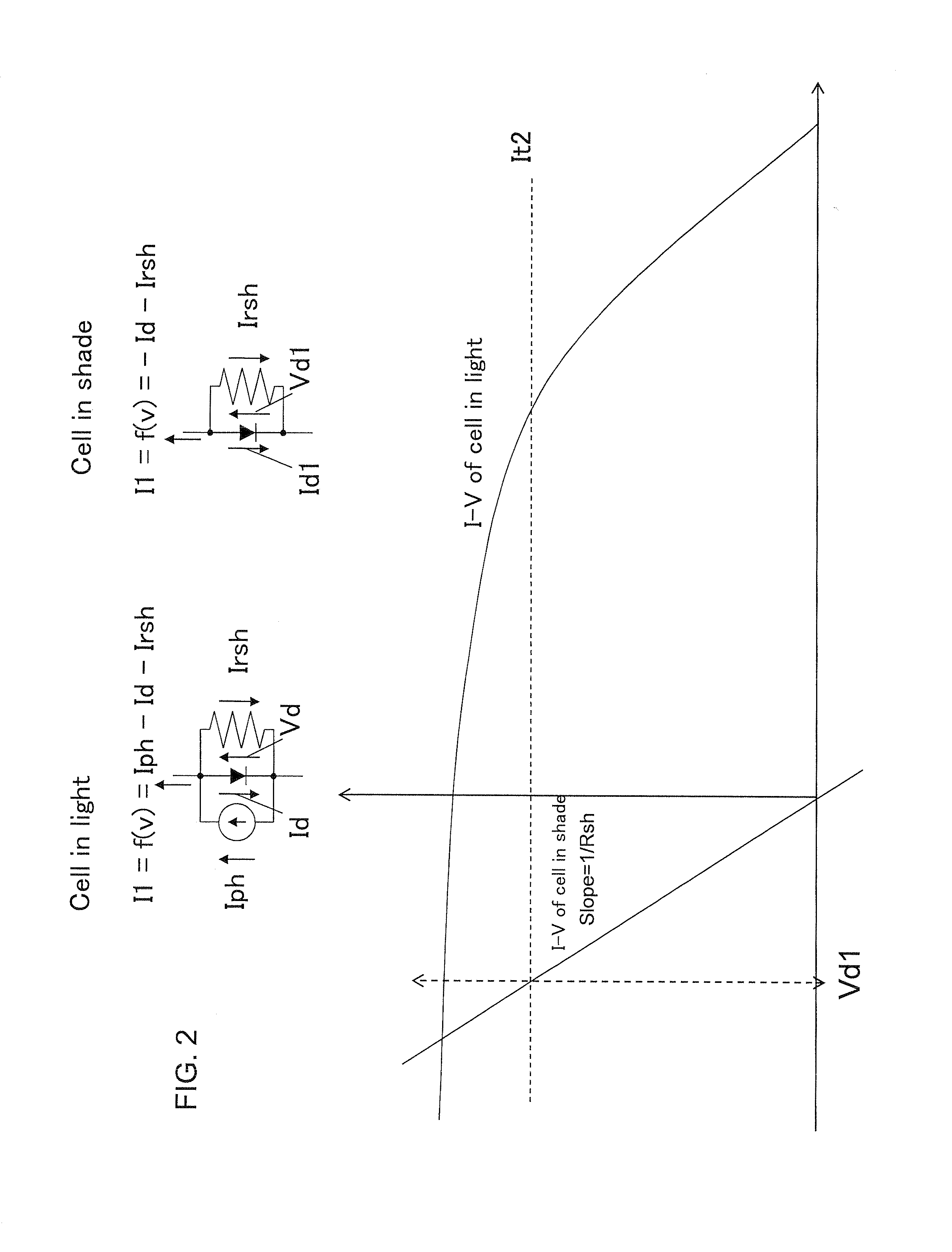Thin-film solar cell module
a solar cell module and thin film technology, applied in the direction of photovoltaics, electrical devices, semiconductor devices, etc., can solve the problems of large integration loss, difficult to increase the number of integration stages, and relatively small substrate size of thin film solar cell modules, etc., to achieve high voltage output and maintain hotspot resistance
- Summary
- Abstract
- Description
- Claims
- Application Information
AI Technical Summary
Benefits of technology
Problems solved by technology
Method used
Image
Examples
embodiment 1
Embodiment of 53 Stages×12 Parallels×2 Blocks in Series
[0087]FIG. 5 illustrates an integrated thin-film solar cell module according to Embodiment 1 of the present invention, and FIG. 5 (a) is a plan view, FIG. 5 (b) is a cross-sectional view taken along lines A-B of FIG. 5 (a), and FIG. 5 (c) is a cross-sectional view taken along lines C-D of FIG. 5 (a). FIG. 6 illustrates a circuit diagram.
[0088]In Embodiment 1, a supporting substrate 1 is, for example, a translucent glass substrate or a resin substrate such as a polyimide. On the substrate (surface), a first electrode (for example, a transparent conductive film of SnO2 (tin oxide)) is formed by a thermal CVD method or the like. As long as the first electrode is a transparent electrode, it may be, for example, ITO which is a mixture of SnO2 and In2O3. Thereafter, the transparent conductive film is appropriately removed by patterning to form dividing scribe lines 3. Formation of the dividing scribe lines 3 forms the first electrode ...
embodiment 2
Embodiment of 53 Stages×6 Parallels×4 Blocks in Series
[0123]FIG. 7 illustrates an integrated thin-film solar cell module according to Embodiment 2 of the present invention, and FIG. 7(a) is a plan view, FIG. 7(b) is a cross-sectional view taken along lines E-F of FIG. 7(a), and FIG. 7(c) is a cross-sectional view taken along lines G-H of FIG. 7(a). FIG. 8 illustrates a circuit diagram.
[0124]Embodiment 2 is characterized in a connection method after division in order to output a higher voltage. The other configurations and the production method are the same as those of Embodiment 1. Specifically, processes up to the formation of the first electrode 2, the dividing scribe lines 3, the photoelectric conversion film 4, the second electrode 5, and the cell dividing grooves 6 are the same as those of Embodiment 1. Successively, the cell string is divided to 12 unit cell strings by the cell string dividing grooves 8 running in the vertical direction. At the time of the division, a middle s...
embodiment 3
Embodiment of 48 Stages×5 Parallels×4 Blocks in Series Achieved by Using Two Substrates of 48 Stages×5 Parallels×2 Blocks in Series
[0129]As for Embodiments 1 and 2, the supporting substrate itself is large, and have been described examples of the thin-film solar cell module in which all cell strings are formed on the substrate. However, even in the case where a plurality of small supporting substrates are combined to form a large solar cell module, similar problems will arise. In that case, a module of high voltage can be produced while ensuring reliability by forming cell strings in respective supporting substrates so that the requirement shown in the formula (1) is met and connecting the cell strings together. That is, the cell strings are formed in the same manner as in Embodiments 1 and 2, and arranged in two small sized integrated substrates connected in parallel on one integrated substrate 9 as illustrated in FIG. 9. That is, two supporting substrates 1 of the thin-film solar ...
PUM
 Login to View More
Login to View More Abstract
Description
Claims
Application Information
 Login to View More
Login to View More - R&D
- Intellectual Property
- Life Sciences
- Materials
- Tech Scout
- Unparalleled Data Quality
- Higher Quality Content
- 60% Fewer Hallucinations
Browse by: Latest US Patents, China's latest patents, Technical Efficacy Thesaurus, Application Domain, Technology Topic, Popular Technical Reports.
© 2025 PatSnap. All rights reserved.Legal|Privacy policy|Modern Slavery Act Transparency Statement|Sitemap|About US| Contact US: help@patsnap.com



